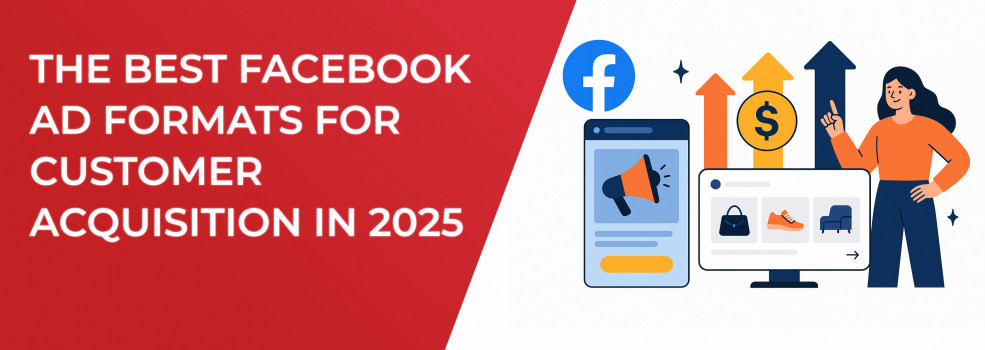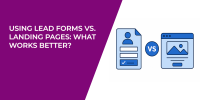The average cost-per-action (CPA) on Facebook keeps rising, so choosing the right ad format is one of the fastest ways to lower acquisition costs without simply throwing more budget at the problem. When brands ask, “How do we reach new customers on Facebook and scale profitably?” we point them to the six formats below, paired with smart Facebook ad optimization techniques that work right now. Master these formats and you will spend less, convert more, and outpace competitors who rely on tired single-image posts.
1. Reels Ads: short-form video that converts
Reels may feel playful, but they mean business. Before we dive into a quick checklist, remember that users come to Reels for entertainment, so your first frame must look and feel native to the feed.
-
Performance punch: Reels ads often deliver roughly 35% higher click-through rates than traditional feed videos.
-
Why it works for acquisition: A full-screen, sound-on experience stops the scroll and helps you capture customers on Facebook before they move on.
-
Optimization checklist:
-
Open with movement in the first second.
-
Use Advantage+ placements so Meta’s AI can handle Facebook ad delivery optimization.
-
Deploy retargeting pixels to reach engaged viewers with a timely offer.
-
Native style and instant movement are the twin drivers of Reels performance.
Finish every Reels campaign with a quick creative audit so you know which hooks, captions, and calls-to-action earned the most engagement.
For a broader look at every placement available this year, skim our Ultimate Guide to Facebook Ad Formats.
2. Advantage+ Sales and Lead Campaigns
Meta baked Advantage+ automation into both sales and lead objectives, bundling campaign budget optimization, placements, and AI-generated audiences into a single toggle. Letting the algorithm steer spend typically cuts costs across the board.
Pro move: Seed the system with a high-value custom audience on Facebook, for example, repeat buyers, then let Advantage+ hunt for fresh lookalikes. After a week, review the results to decide whether to broaden or narrow targeting.
We ran the numbers in Custom vs Lookalike Audiences to see which one wins on ROAS.
3. Click-to-WhatsApp (and Messenger) Ads
Click-to-Chat placements open a conversation instead of a landing page. Because prospects can ask questions in real time, brands often see much lower CPA compared with traditional conversion campaigns. Before we look at setup steps, remember that speed matters; leads expect a near-instant reply, so automation is your friend here.
If you’re unsure which objective matches your funnel stage, bookmark Meta Ad Campaign Objectives Explained.
Real-time conversations cut friction and capture first-party data.
Quick setup tips
-
Select the “Sales” objective and set Conversion location to Messaging App.
-
Pre-build canned responses so leads get helpful answers within seconds.
-
Sync chats back to your CRM, creating a data loop for sharper Facebook ad optimization.
After your first 50 conversations, review common questions and add them to your FAQ flow so agents spend less time typing and more time closing.
4. Lead Ads (Instant Forms)
When you need sheer volume, Instant Forms still shine. Because the user never leaves Facebook, completion rates stay high and CPAs stay low. Pair the form with a create custom audience on Facebook exclusion list so you do not pay twice for the same lead. Treat the form like a micro-landing page: a strong headline, three to five lightweight questions, and a privacy disclaimer build trust quickly. Follow up with an email or SMS nurture sequence within five minutes to keep momentum.
5. Dynamic Product and Carousel Ads
E-commerce marketers swear by Dynamic Product Ads (DPAs) because the creative pulls directly from the shopper’s browsing history, so every swipe feels personal.
Must-do settings
-
Activate the Meta Pixel, because what is pixel on Facebook still matters for attribution.
-
Fold DPAs into your Facebook ads optimization routine by A/B testing price overlays versus lifestyle imagery.
-
Expand into Advantage+ audiences once your pixel data is deep enough.
Personalized products meet shoppers exactly where they left off.
Close each test cycle with a performance snapshot. Identify top-selling SKUs and slot them into your evergreen retargeting campaigns.
6. Collection Ads plus Instant Experience
Collection Ads create a mini storefront that loads instantly on mobile. First, run a short Reels teaser to warm up viewers. Then retarget them with a custom list on Facebook and a Collection Ad that lets users browse multiple products without leaving the platform. After launch, compare thumb-stop ratios and outbound click rates to see whether your hero video or product grid drives more intent. Adjust the creative mix and relaunch the highest-performing version.
Putting it all together: a three-step playbook
Before we jump into the steps, remember that success on Facebook rarely comes from a single tactic. It is the compound effect of well-timed creative, clean data, and automated spending.
-
Prime the Pixel
Verify your events so every form of AI Facebook ad optimization, from Advantage+ to campaign budget optimization, has clean data to learn from. -
Build tiered audiences
• Warm: people who viewed your Reels for at least 15 seconds
• Hot: site visitors who added to cart
• Cold: one- to three-percent lookalikes of purchasers created from custom audiences on Facebook -
Automate budget and delivery
Toggle advantage campaign budget after ad sets exit the learning phase. Meta’s AI will shift spend toward the formats (for example, Reels versus Click-to-WhatsApp) that win in real time, saving you late-night spreadsheet work.
Once the playbook is live, check performance every 48 hours. Pause underperforming creatives, feed new winners into your tests, and watch CPAs trend downward.
Final word
Customer acquisition on Facebook in 2025 is not about chasing a single “magic” ad. It is about the mix: attention-grabbing Reels, friction-free chats, AI-optimized budgets, and data-rich custom audiences on Facebook that keep the flywheel spinning. Start with the formats above, layer in continuous experimentation, and you will be well on your way to the lowest CPA you have ever seen.

